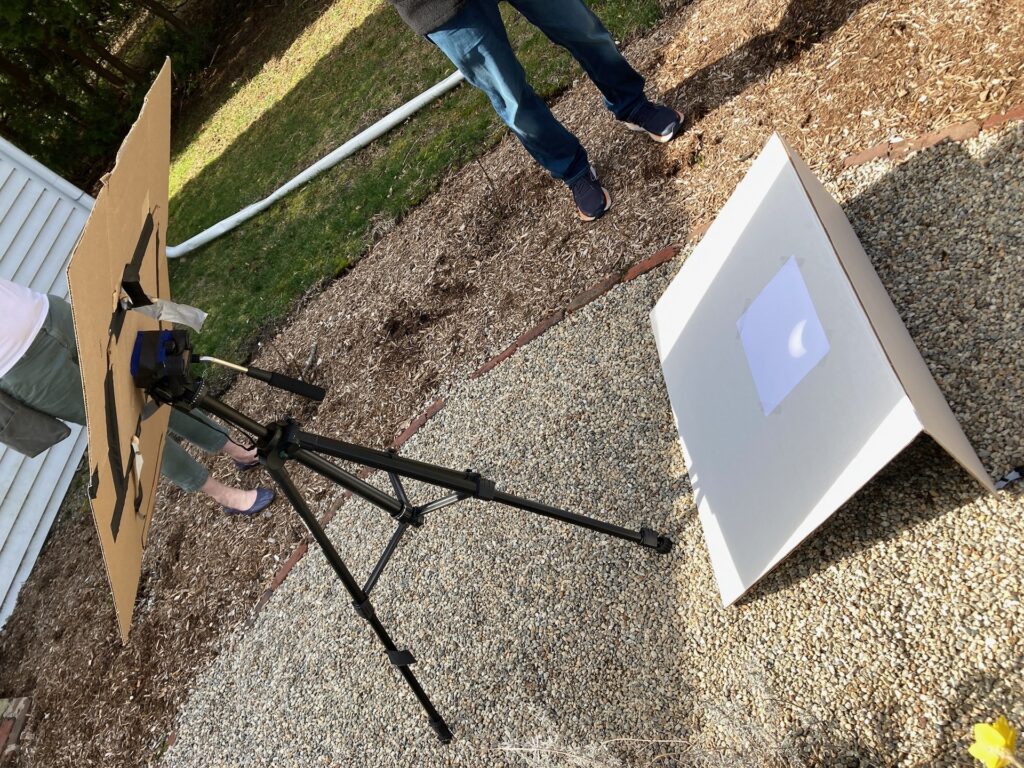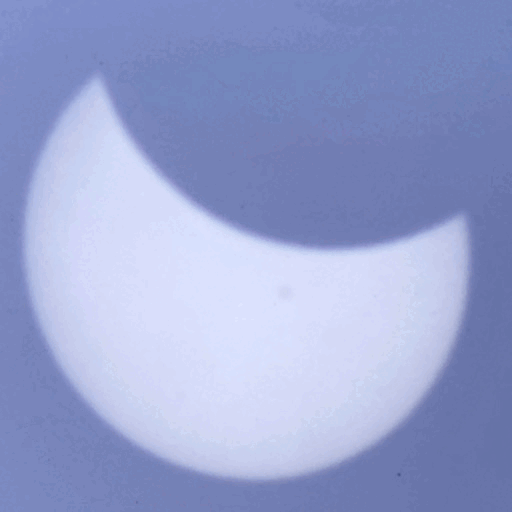In order to watch the solar eclipse this afternoon, I set up binoculars on a tripod next to the Parish House at First Parish of Cohasset. This is the same set-up I used to project the transit of Venus back in 2012. Here’s what it looked like:

I used an old pair of inexpensive binoculars, so the image quality wasn’t perfect. But the image was good enough that we could see at least one sunspot. The size of the projected image was about 4 inches across.
The eclipse reached about 92% of maximum here in Cohasset. Some high thin clouds passed over, but they weren’t thick enough to block the sun. As the eclipse progressed, it didn’t get dark, but the light was dim enough to make it feel like dusk. Some robins started singing their evening song. The air grew noticeably cooler.
I took photos showing most of the progress of the eclipse, and assembled them into an animated GIF. Two notes about this GIF: First, the amount of time each image of the GIF is displayed is proportional to the amount of time elapsed between photos. Second, the GIF shows the image as projected; but the projection was inverted from what we saw through the protective glasses. Also, notice the chromatic aberration when the eclipse is at the maximum, presumably from refraction.

Half a dozen people from First Parish came over to the Parish house to watch the eclipse. Everyone else had a pair of those protective glasses. It was fun to be able to view the eclipse both through the glasses and with the projection. Hosetly, we probably did more talking than looking at the eclipse. We kept inviting random passers-by to join us. A parent with a couple of preschool-aged kids came over, and it was interesting to see that they were too young to understand what a projection was, or really even to understand what they were seeing through the protective glasses.
See also my post on the 2017 solar eclipse.
